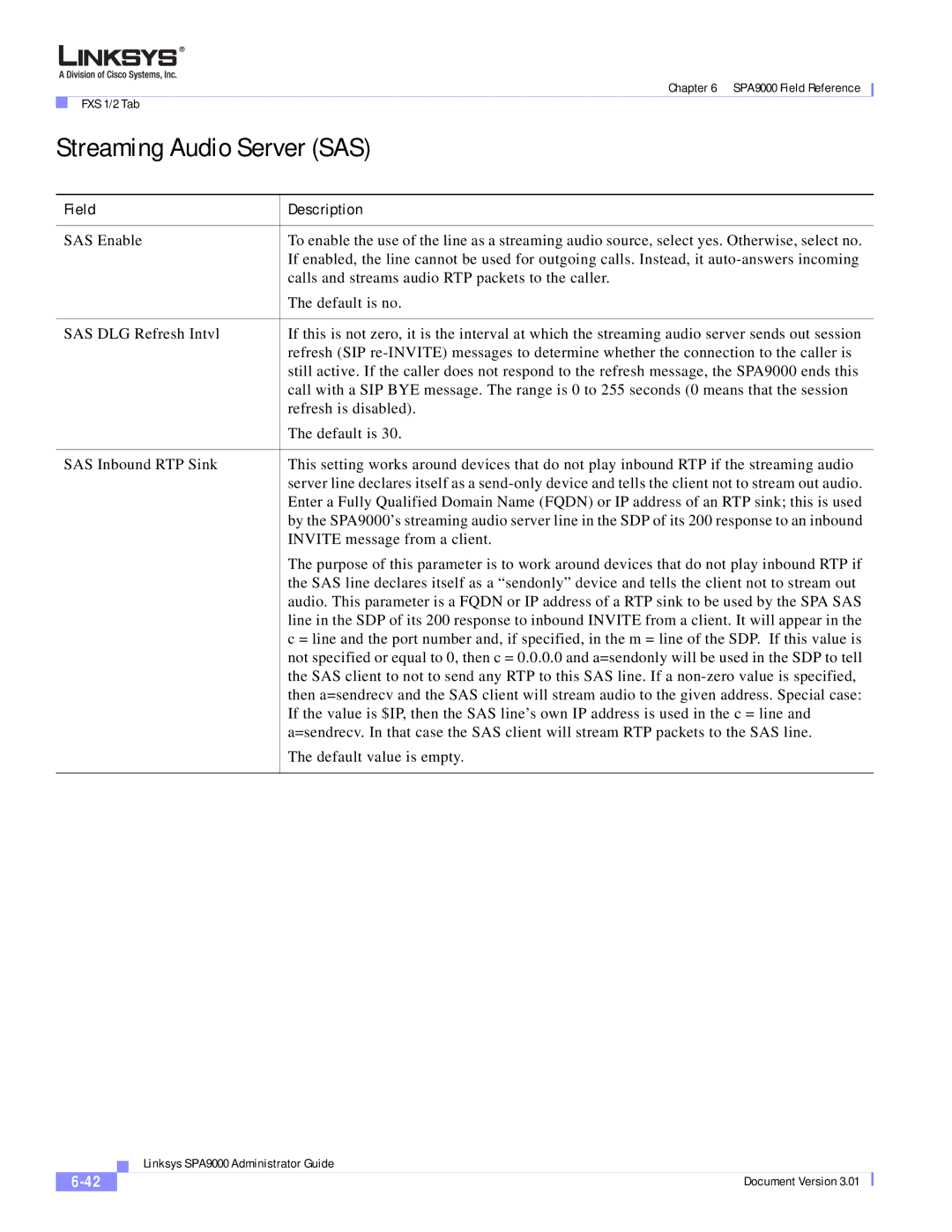
Chapter 6 SPA9000 Field Reference
FXS 1/2 Tab
Streaming Audio Server (SAS)
Field | Description |
|
|
SAS Enable | To enable the use of the line as a streaming audio source, select yes. Otherwise, select no. |
| If enabled, the line cannot be used for outgoing calls. Instead, it |
| calls and streams audio RTP packets to the caller. |
| The default is no. |
|
|
SAS DLG Refresh Intvl | If this is not zero, it is the interval at which the streaming audio server sends out session |
| refresh (SIP |
| still active. If the caller does not respond to the refresh message, the SPA9000 ends this |
| call with a SIP BYE message. The range is 0 to 255 seconds (0 means that the session |
| refresh is disabled). |
| The default is 30. |
|
|
SAS Inbound RTP Sink | This setting works around devices that do not play inbound RTP if the streaming audio |
| server line declares itself as a |
| Enter a Fully Qualified Domain Name (FQDN) or IP address of an RTP sink; this is used |
| by the SPA9000’s streaming audio server line in the SDP of its 200 response to an inbound |
| INVITE message from a client. |
| The purpose of this parameter is to work around devices that do not play inbound RTP if |
| the SAS line declares itself as a “sendonly” device and tells the client not to stream out |
| audio. This parameter is a FQDN or IP address of a RTP sink to be used by the SPA SAS |
| line in the SDP of its 200 response to inbound INVITE from a client. It will appear in the |
| c = line and the port number and, if specified, in the m = line of the SDP. If this value is |
| not specified or equal to 0, then c = 0.0.0.0 and a=sendonly will be used in the SDP to tell |
| the SAS client to not to send any RTP to this SAS line. If a |
| then a=sendrecv and the SAS client will stream audio to the given address. Special case: |
| If the value is $IP, then the SAS line’s own IP address is used in the c = line and |
| a=sendrecv. In that case the SAS client will stream RTP packets to the SAS line. |
| The default value is empty. |
|
|
| Linksys SPA9000 Administrator Guide |
Document Version 3.01 |
